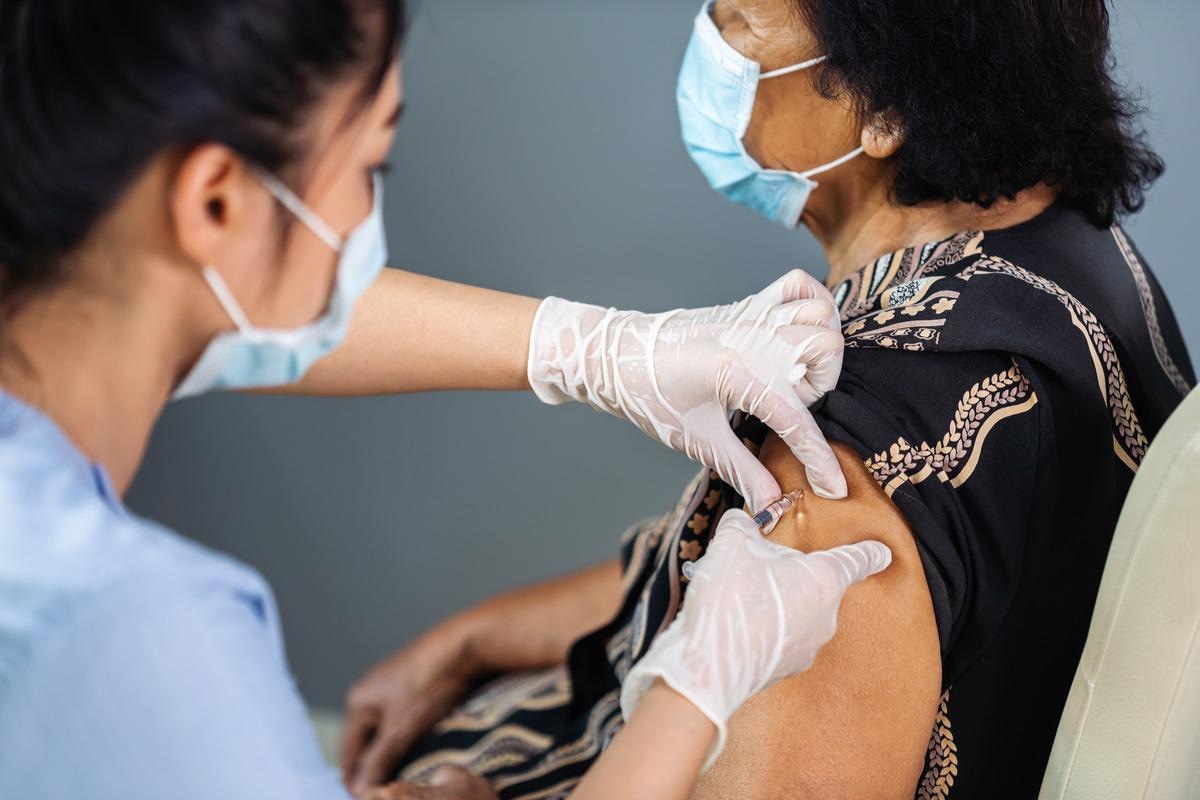Many different vaccinations have been developed and approved worldwide against severe acute respiratory syndrome 2 (SARS-CoV-2) in a remarkably short period. Although mass vaccinations have resulted in a reduced coronavirus disease 2019 (COVID-19) caseload, the current increase in cases has prompted questions about the life span of protection provided by these vaccines.
 Study: Comparative magnitude and persistence of SARS-CoV-2 vaccination responses on a population level in Germany. Image Credit: BaLL LunLa/Shutterstock
Study: Comparative magnitude and persistence of SARS-CoV-2 vaccination responses on a population level in Germany. Image Credit: BaLL LunLa/Shutterstock
Several studies on immune responses triggered by vaccination focused only on the initial peak response generated in specific population subgroups and examined the effects of only one or two different vaccinations.
In a recent study posted on medRxiv* preprint server, researchers conducted a multi-local and serial cross-sectional prevalence study on antibodies against SARS-CoV-2 in Germany (MuSPAD) to assess the dynamics of vaccine-induced immune responses.
The study
A total of 1,731 MuSPAD participants received a homologous or heterologous vaccine from BNT162b2 by Pfizer, Astra Zeneca AZD1222, Moderna’s mRNA-1273, or Janssen’s single-shot Ad26.CoV2.S between July 2020 and August 2021 were enrolled in the study. The participants were further divided into three sub-groups: mix and match sample cohort, time point sample cohort, and longitudinal sample cohort.
A total of 1,821 serum samples were collected and analyzed using multiplex immunoassay MULTICOV-AB, which includes SARS-CoV-2 antigens (spike, receptor-binding domain (RBD), S1 domain, S2 domain, and nucleocapsid) and endemic coronaviruses, and high-throughput screening of angiotensin-converting enzyme 2 (ACE2) RBD binding inhibition by ACE2-RBD competition assay.
Background
In the mix and match cohort, the results of MULTICOV-AB revealed that mRNA-based homologous vaccinations induced a greater Spike, RBD, and S1 response in comparison to other vector-based vaccines. Among mRNA vaccines, Moderna’s mRNA-1273 elicited a significantly higher response than Pfizer’s BNT162b2. In comparison to vector-based vaccinations, the two-dose vaccination with AstraZeneca AZD1222 produced higher titers than the one-dose Ad26.CoV2.S from Janssen. The vector-based homologous vaccination also showed the highest serological non-respondent rate. The titers of heterologous mRNA vaccine and homologous mRNA vaccines were similar, while heterologous m-RNA titers were significantly higher than the titers of two-dose vaccination with AstraZeneca AZD1222. The study found more S2 titers in vector-based vaccines as compared to m-RNA based ones.
The homologous mRNA-based vaccines elicited high RBD and S1 responses as compared to S2, which was also observed with heterologous mRNA vaccines.
The results from the ACE2 competitive assay showed higher ACE2 binding inhibition in homologous mRNA immunization as compared to homologous vector-based immunization. Vaccination with Ad26.CoV2.S led to minimal ACE2 binding inhibition, with only 8.3% characterized as responders. The mix and match cohort also included samples of participants who were infected earlier and then vaccinated; they showed high levels of immunoglobulin G (IgG) with strong ACE2 binding inhibition. This increase was also evident with vector-based vaccines in recovered vaccinated participants in comparison to naïve vaccinated participants.
The researchers evaluated lifespan and antibody response kinetics in time point sample cohort to demonstrate key response periods for antibody-producing B-cell activity such as expansion, peak, and plateau phase (28 to 65 days post-final dose) after a complete vaccination scheme. The results showed that vaccine-induced titers and ACE2 binding inhibition both increased initially and peaked during the second time point (26 to 30 days post-second dose)but decreased linearly with increasing time. For BNT162b2, 22.22% of samples were found to be non-responsive for ACE2 binding inhibition at 176-203 days post-second vaccination.
The pattern of decreasing antibody titers and ACE2 inhibition was validated through samples from the longitudinal sample cohort which had samples of the same individuals at first and post-second dose. The analysis showed a reduction in titers between first- and second-dose samples.
The RBD and S1 antibodies showed the highest decrease while the spike trimer and S2 showed the lowest decrease over time. The ACE2 binding inhibition also decreased in the second sampling as compared to the first for SARS-CoV-2 variants of concern: Alpha 36%, Beta 30%, Gamma 29%, and Delta 38%.
Conclusions
The present study was one of the first and largest population-based studies that examined vaccine responses for all currently available vaccination schemes in Germany. The study findings showed that homologous mRNA or heterologous vaccination induces the highest immune responses due to high RBD- and S1-specific antibodies which is crucial for neutralizing SARS-CoV-2.
According to the researchers, the high IgG and ACE2 inhibition responses observed in recovered and vaccinated individuals can help guide future dose allocation. Also, further studies on immune response differences between mRNA-based and vectored vaccines can help vector-based vaccine development in the future.
*Important notice
medRxiv publishes preliminary scientific reports that are not peer-reviewed and, therefore, should not be regarded as conclusive, guide clinical practice/health-related behavior, or treated as established information.
- Dulovic A., Kessel B., Harries M., et al. 2021. Comparative magnitude and persistence of SARS-CoV-2 vaccination responses on a population level in Germany. medRxiv. doi: https://doi.org/10.1101/2021.12.01.21266960 https://www.medrxiv.org/content/10.1101/2021.12.01.21266960v1
Posted in:
Tags: ACE2, Angiotensin, Angiotensin-Converting Enzyme 2, Antibodies, Antibody, Assay, Cell, Coronavirus, Coronavirus Disease COVID-19, Enzyme, High-throughput screening, Homologous, Immune Response, Immunization, Immunoassay, Immunoglobulin, Receptor, Respiratory, RNA, SARS, SARS-CoV-2, Severe Acute Respiratory, Severe Acute Respiratory Syndrome, Syndrome, Vaccine

Written by
Susha Cheriyedath
Susha has a Bachelor of Science (B.Sc.) degree in Chemistry and Master of Science (M.Sc) degree in Biochemistry from the University of Calicut, India. She always had a keen interest in medical and health science. As part of her masters degree, she specialized in Biochemistry, with an emphasis on Microbiology, Physiology, Biotechnology, and Nutrition. In her spare time, she loves to cook up a storm in the kitchen with her super-messy baking experiments.
Source: Read Full Article
